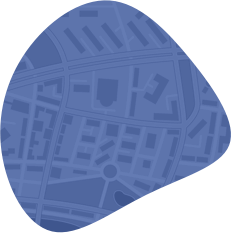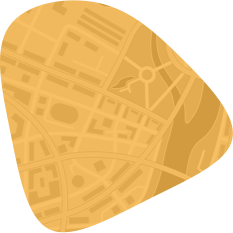
Facet Joint Syndrome is commonly referred to as osteoarthritis in the spine. It's a condition that significantly impacts the back and spine. It primarily affects the facet joints, which are small, stabilizing joints located between and behind each vertebra in the spinal column. These joints play a crucial role in allowing the flexibility of the spine, enabling us to bend, twist, and perform daily movements.
Facet Joint Syndrome develops due to several factors that contribute to the deterioration of the facet joints in the spine. Understanding these causes is crucial for both prevention and effective treatment. The primary factors include:
- Age-related wear and tear.
- Injury or trauma.
- Increased pressure and load from engaging in heavy physical labor.
- Development of bone spurs as the body attempts to repair the damage caused by the erosion of cartilage.
What are the symptoms of facet joint syndrome?
Facet Joint Syndrome can present a range of symptoms that vary based on the affected region of the spine and the severity of the condition. The most common symptoms include:
- Localized pain: One of the primary symptoms is pain at the site of the affected facet joint. This pain occurs in the lower back (lumbar region), neck (cervical region), or, less commonly, the mid-back (thoracic region).
- Radiating pain: The pain may radiate to surrounding areas. In cervical facet joint syndrome, pain might extend to the shoulders, upper back, or arms. In lumbar facet joint syndrome, pain can radiate to the buttocks and back of the thighs.
- Stiffness and reduced flexibility: Stiffness in the affected area, especially in the morning or after periods of inactivity, is common. There may also be a noticeable reduction in flexibility, making it difficult to perform certain movements.
- Tenderness: The area around the affected joint may be tender to the touch.
- Increased pain with certain movements: Bending backward or twisting the spine often exacerbates the pain. Patients might find standing more painful than sitting, as standing puts more pressure on the facet joints.
- Pain that varies with posture: Certain postures or positions may relieve or worsen the pain. For instance, leaning forward might reduce discomfort, whereas extending the spine can increase it.
- Muscle spasms: In response to joint pain, the muscles surrounding the affected area may spasm, leading to further discomfort and contributing to a cycle of pain and muscle tension.
- Numbness or tingling: In some cases, if the affected joints are causing nerve irritation, there might be symptoms like numbness or tingling in the extremities.
How is facet joint syndrome diagnosed and treated?
Diagnosing Facet Joint Syndrome typically involves a combination of clinical evaluation and various diagnostic tests to accurately identify the condition and differentiate it from other causes of back pain. The process begins with a detailed medical history, where the doctor inquires about the symptoms, their onset, duration, and any activities or positions that aggravate or alleviate the pain.
During the physical examination, the doctor will assess the spine's range of motion, identify areas of tenderness, and look for signs of nerve involvement, such as weakness, numbness, or reflex changes. A doctor will also likely perform imaging tests, such as X-rays, CT scans, or MRIs, to identify any abnormalities in your spine. Additionally, a doctor will rule out other conditions, such as herniated discs or spinal stenosis.
Treatment for Facet Joint Syndrome typically involves a combination of non-surgical and, in more severe cases, surgical methods. Treatment typically includes:
- Medications: This includes over-the-counter or prescription pain relievers, anti-inflammatory drugs, and muscle relaxers.
Physical therapy: Physical therapy includes exercises to improve flexibility, strengthen the muscles supporting the spine, and reduce pain. - Cortisone injections: Injecting cortisone directly into the facet joints can provide significant pain relief by reducing inflammation.
- Radiofrequency neurotomy: In this procedure, radiofrequency waves create heat that damages specific nerves, blocking pain signals from the affected facet joints.
- Alternative therapies: Acupuncture, chiropractic treatments, and massage therapy may provide relief.
- Facet joint blocks: Similar to cortisone injections, anesthetic agents can be injected into the facet joints to block pain signals.
- Surgical options: Surgery is typically considered only if conservative treatments fail and the pain is severe. Common procedures include facet rhizotomy and spinal fusion.
Get the care you need from an experienced New York bone doctor
Experiencing a spinal cord or back injury can be life-altering, potentially impacting your mobility and daily activities. If you think you're experiencing facet joint syndrome or any other spinal injury, seek immediate medical attention from an experienced bone doctor.
At Island Musculoskeletal Care (IMC Bone Doc) in New York, our orthopedic spine surgeons offer prompt appointments, including same-day options across our seven locations. Our team boasts over 100 years of collective experience treating spine and back injuries. We're equipped with advanced diagnostic tools for accurate assessments and effective treatment plans.
Our practice also handles workers' compensation and no-fault insurance claims. To find out how we can help you, contact IMC Bone Doc for expert care and to regain control of your life.






















